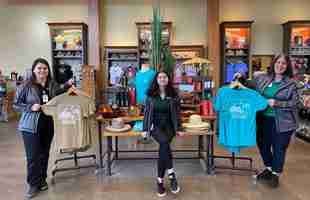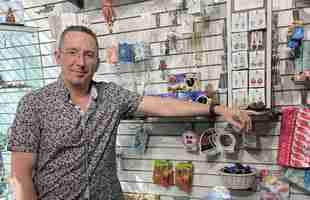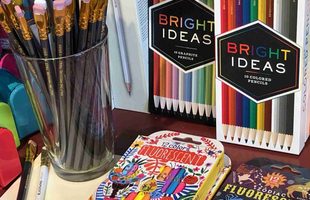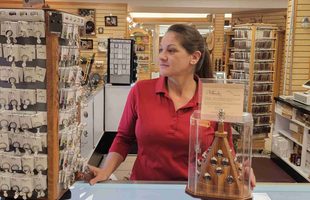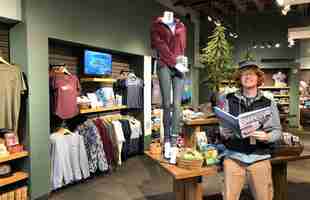Life may be a zoo these days, but that doesn’t mean that zoo and aquarium gift store shoppers aren’t looking for quality gift items. Zoos nationwide offer their take on popular high-end products in their shops.
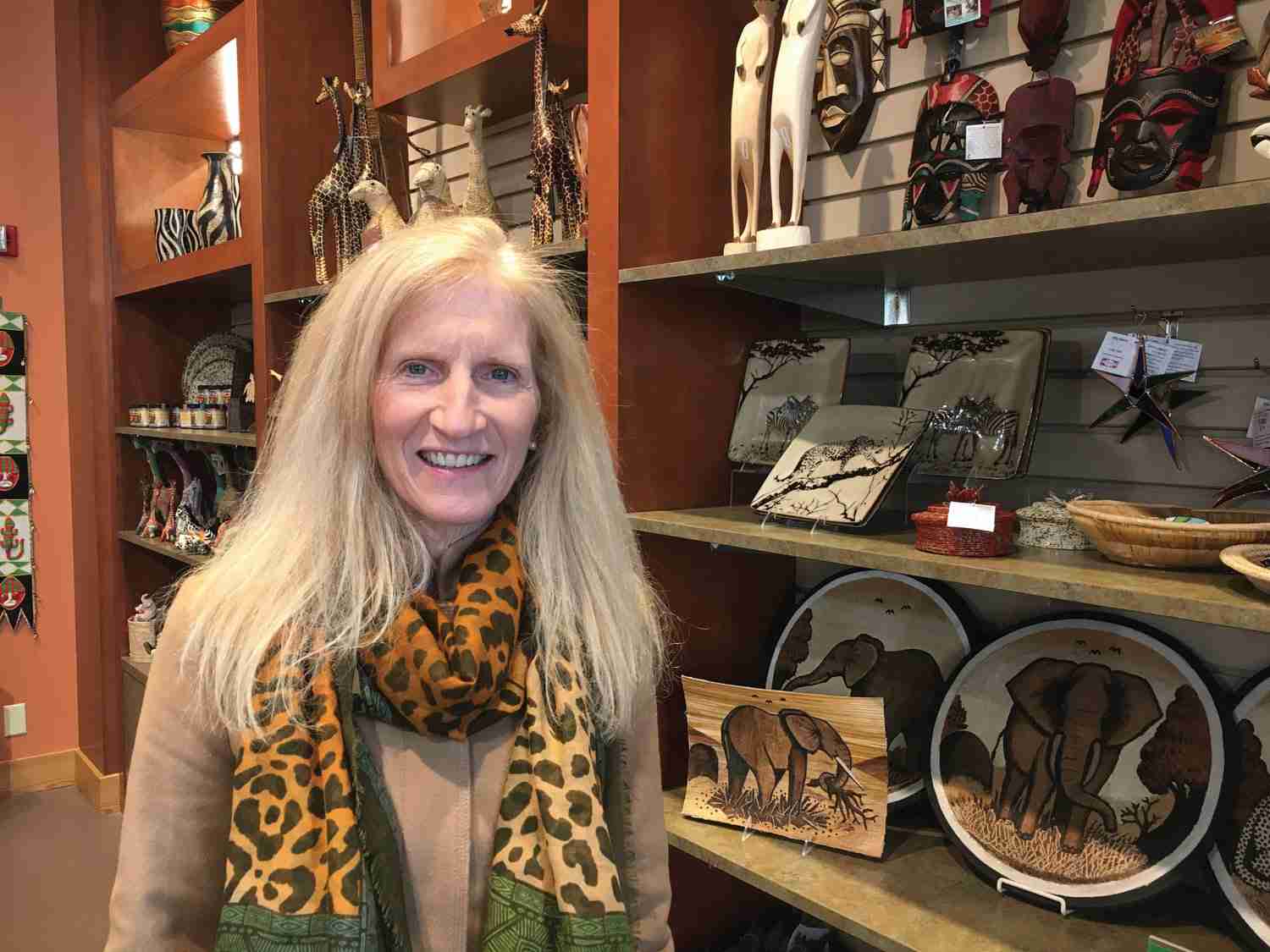 Judy Rancour, director of retail, the Saint Louis Zoo in St. Louis, Mo. Higher-end gifts with a message sell well for the shop.
Judy Rancour, director of retail, the Saint Louis Zoo in St. Louis, Mo. Higher-end gifts with a message sell well for the shop.At the Saint Louis Zoo in St. Louis, Mo., Director of Retail Judy Rancour described her top-selling quality gift items. “Probably the most gross in highest ticket price points comes from our conservation commerce area. These are arts and crafts items from indigenous populations that fall under the fair-trade umbrella. We have sculptures, wall hangings, paintings, hand-crafted jewelry and carvings. You name it,” she said.
The reason these items do well for the shop is the message behind them. “Our visitors are able to support indigenous people and purchase handmade items. The emphasis throughout our organization is on conservation, education, and sustainability, and there’s a true message to this merchandise. They appeal to everyone from the true collector to millenials who want to spend their money where they can make a difference.”
“In the accessories area we carry fair-trade scarves that are perhaps double the retail cost of other scarves, but the fabric is nicer and they have the fair-trade handle on them. We carry jewelry that is hand-crafted from South America, very unique, almost one-of-a-kind pieces. There’s great acceptance for these items.”
 An exterior view of the Treetop Shop & Zoo Exit at the Saint Louis Zoo. The zoo has nine retail outlets, and the largest is 4,500 square feet.
An exterior view of the Treetop Shop & Zoo Exit at the Saint Louis Zoo. The zoo has nine retail outlets, and the largest is 4,500 square feet.While these higher end products don’t sell as quickly as mass merchandised, lower-cost items, Rancour noted that discerning customers appreciate the quality of the pieces and the story behind them, making them willing to pay a higher price.
Rancour has no specific plans for new higher-priced items in 2017. “It’s an on-going procses, absolutely. We test new items on a monthly basis and we are always looking for something new and different. There’s really no specific category,” she explained. “Probably the most exciting recent addition for us at the moment is a new line of gourmet chocolates made with wonderful, sustainable palm oil as one of the ingredients. That chocolate is part of a big initiative for us. It’s more expensive than commercial chocolate and snacks, but it is a part of the consistent conservation message we are putting in front of our visitors.”
The zoo has nine retail outlets throughout the zoo, and the largest is 4500 square feet, providing plenty of room for Rancour to offer higher ticket items as well as lower priced souvenirs and gifts. “I think any of our conservation pieces are just great examples of how we are trying to bridge the education and conservation message with our visitors here. It’s nice to take home a stuffed animal or a magnet, but to take away something that really connects you with our mission is very important here.”
 Fair-trade toys and animal figures at the Saint Louis Zoo. “ …The emphasis throughout our organization is on conservation, education, and sustainability, and there’s a true message to this merchandise,” the director of retail said of fair-trade goods.
Fair-trade toys and animal figures at the Saint Louis Zoo. “ …The emphasis throughout our organization is on conservation, education, and sustainability, and there’s a true message to this merchandise,” the director of retail said of fair-trade goods.At CuriOdyssey at Coyote Point Science Center and Zoo in San Mateo, Calif., the focus in high quality gift items is on learning. Melvin Buzon, store manager and buyer, said his best-selling gift items are based around the science exhibits and Northern California-focused zoo animals at CuriOdyssey.
“My top high-end items are science kits and plush animals. When it comes to plush, we don’t do anything that humanizes animals or comes in odd colors. We try to get them as realistic as possible. Our plush sells more than anything else we carry, with the two top sellers being a bobcat and a river otter, both by Wild Republic. The river otter is the best I’ve seen,” Buzon said.
He said the plush animals in his 450-square-foot shop are both fun and educational. “Kids who saw an animal here can take a very realistic plush animal like it home with them. It’s not a cartoon version, it looks real,” he attested.
 A fair-trade merchandise display at the Saint Louis Zoo. Included in the attraction’s fair-trade merchandise are sculptures, wall hangings, paintings, hand-crafted jewelry and carvings.
A fair-trade merchandise display at the Saint Louis Zoo. Included in the attraction’s fair-trade merchandise are sculptures, wall hangings, paintings, hand-crafted jewelry and carvings.When it comes to science kits, one of the most popular Buzon carries caters to ages 2-12 from Learning Resources. “We get a lot of parents who are looking for a science kit that works for young children, one that lets adults work with their children to explore science. Most kits start at ages 5 and up; it’s a rare thing to find a kit for younger kids, and this one really works for us because we are geared toward younger kids in the museum itself.” Another big seller: a jumbo magnifying glass. “It has a good-sized handle and a little built-in kick-stand.” They’re so popular that Buzon has to keep reordering them, even though they sell for a higher price point than other items of this type.
For 2017 and throughout the year, Buzon looks for new, quality items that are “different from the usual toys, and geared toward science and animals. Recently a gentleman stopped by with a book about particle physics for little kids under 5, called ‘The ABCs of Particle Physics.’ It’s a little board book. That’s something I’m interested in.”
In Norwalk, Conn., Diana Valencia, store director for The Maritime Aquarium said home decor items make up the majority of her shop’s high-end gift items. “Platters, dishes, wine glasses, and other kinds of drinking glasses with our logo on them all sell well for our store,” she related. “We recently carried some very lovely wine glasses with a beautiful gold turtle on it. These types of items do sell well for us, particularly with nautical themes or sea animals depicted on them.” As for 2017, Valencia says her shop is definitely looking at adding higher-priced items, but at this point she doesn’t know what they might be. “We belong to Event Network, and they do the buying for us. So although we’re planning to continue that category, we don’t know what’s coming up yet.”
 At the Saint Louis Zoo, animal-themed chocolate snacks are offered. “Probably the most exciting recent addition for us at the moment is a new line of gourmet chocolates made with wonderful, sustainable palm oil as one of the ingredients,” the director of retail said.
At the Saint Louis Zoo, animal-themed chocolate snacks are offered. “Probably the most exciting recent addition for us at the moment is a new line of gourmet chocolates made with wonderful, sustainable palm oil as one of the ingredients,” the director of retail said.At the Seattle Aquarium in Seattle, Wash., Assistant Store Director Stephanie Johnson said her top best-seller in the high-end category is “definitely our ceramic octopus. The octopus is made by a local artist, and whenever we get these pieces in, they sell right away. In general, local high-end items do really well for us. We also have an octopus water bottle from Liberty Bottle Works that’s very popular, too.”
When it comes to quality jewelry, Johnson also has a strong seller there: pieces that use the local Helenite stone.
“We have blue Helenite which comes from Mt. St. Helens. We are able to get it in blue although many area shops only carry it in green. The local aspect and the unique color of these stones make them very popular. They’re also very beautiful,” Johnson said. “We carry earrings, rings, and pendants all made from Helenite.”
The clothing category also provides best-sellers for the aquarium. “An octopus scarf and tie are two items that do very well for us, and they are also hand-made and local. People in the Seattle market really seek out hand-crafted items.”
Like The Maritime Aquarium, the Seattle Aquarium gift shop itself is not a part of the buying team for the store, but does plan to add new items in 2017. “We’re always planning new items during the springtime. As we get ready for the busy summer season, we add new products,” Johnson related.
At the Santa Barbara Zoo in Santa Barbara, Calif., Shift Lead Chloe Clements said the best-selling high-end items in the zoo’s main store are Cuddlekins plush by Wild Republic. “We often restock these animals twice in a day. They’re very realistic looking as well as being cute and cuddly. Kids get to take home plush animals that actually resemble real animals, many of which are here at the zoo.” In the jewelry category, her shop does well with Wild Pearl necklaces made from abalone and crafted by a Southern California-based company. Elsewhere in the zoo, at the Explore store, fair-trade high-end items abound. “For example, the store carries necklaces made by women in Kenya, as well as a kit that visitors can purchase to make similar-looking pieces. The shop also does weekend activities that show people how the jewelry and other items are made,” she noted. “The Explore store features high quality, environmentally friendly and sustainable products.”
With a particular emphasis on fair-trade items, locally made pieces, and high-end plush, top quality products are making gift and souvenir buying much less of a “zoo” for visitors at zoos and aquariums throughout the United States.

